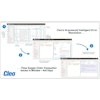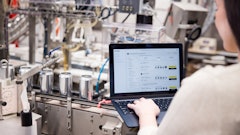
AI adoption among U.S. employees continues to surge in Q2, according to Prodoscore’s Q2 2025 Productivity Pulse report. Overall, AI usage grew 52% compared to Q1, with the HR and staffing industry experiencing a 100% increase in adoption.
The data also showed that AI users were more active during the workday and worked longer hours: across industries, employees using AI logged approximately 30 more active minutes per day than employees who did not.
“Prodoscore’s latest productivity data this quarter underscores how both external forces and changing internal work habits continue to actively reshape how people work, creating clear opportunities for companies to adapt, invest in and lead their employees to success,” says Sam Naficy, Prodoscore CEO. “From the continued emphasis on hybrid flexibility to more AI integration, this data empowers companies to act on real, measurable insights, rather than make broad, unfounded decisions based on gut instinct. These aren’t just trends; they’re the new rules of work — and organizations that align their people, processes and technologies accordingly will be the ones to thrive."
Key takeaways:
- Industrial and logistics outperformed other industries in Q2, likely due to heightened supply chain activity, “frontloading” foreign purchases to hedge against tariffs, and a strategic shift toward more modern and efficient warehouse spaces. Additionally, navigating a competitive labor market, HR and staffing professionals worked harder to secure new business while leveraging AI to streamline recruiting workflows.
- Generative AI adoption, expansion of 5G and fiber networks and growth in cloud computing likely fueled efficiency gains and innovation, resulting in a 4% increase in productivity in Q2.
- Policy uncertainty, shifting tax incentives, new tariffs on clean energy components and significant grid modernization bottlenecks may have delayed or canceled major projects, dragging down output.
- Similar to Q1, hybrid employees across industries continued outperforming both in-office and remote-only workers in Q2, maintaining the highest overall productivity. What’s more, quarter-over-quarter, in-office employees saw the steepest productivity drop at 13%, compared to 2% for hybrid workers and 3.5% for remote employees.
- Professional and business services, HR and staffing and software employees logged the most meeting time per week this quarter, a sign of active deal-making and collaboration. Meeting volume peaked on Mondays and even stayed high on Fridays at more than 1 hour and 25 minutes, reflecting a sustained work pace heading into the weekend.




















